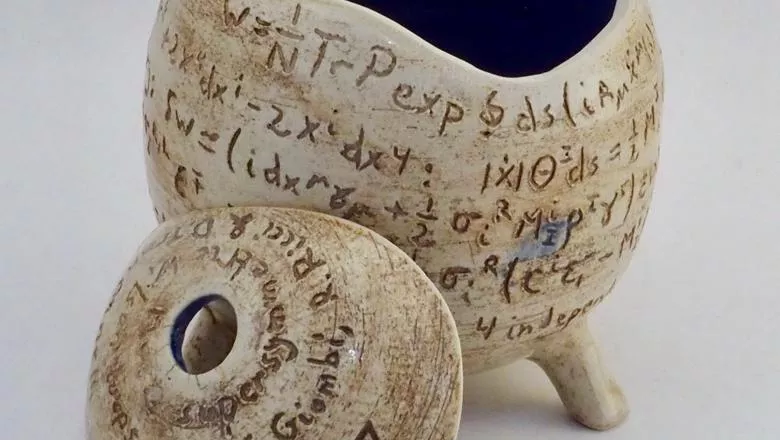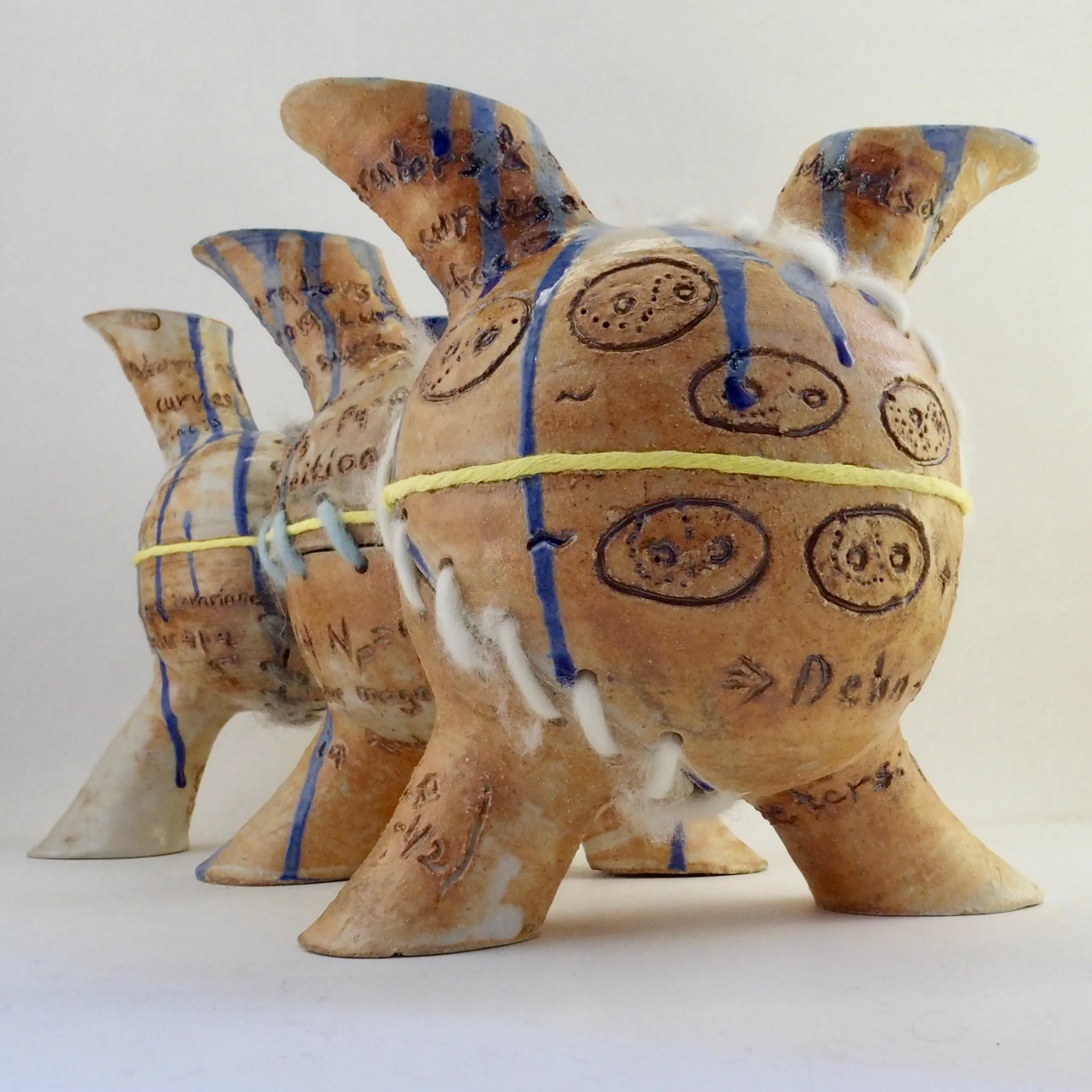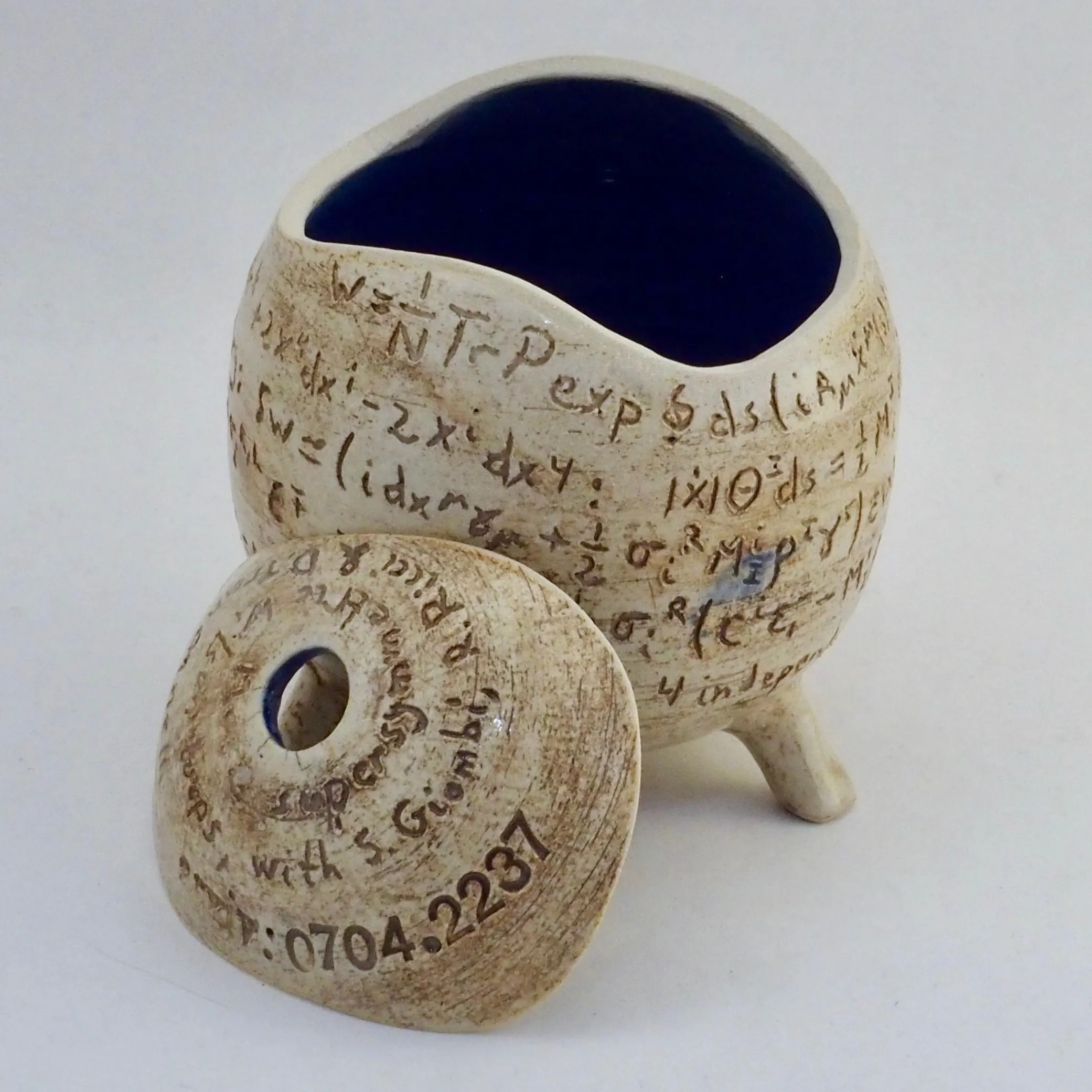As a scientist I generate knowledge, I solve problems that nobody managed previously. In ceramics my creations were far less original, though it is nice that they are tangible. Motivated by this, I decided three years ago to combine these two sides of me by making ceramic artworks inspired by my research. I hope that my art illustrates the creativity of the scientific pursuit in a medium people associate with creativity.
Dr Nadav Drukker
07 June 2019
Creativity squared: An innovative way to document research
Dr Nadav Drukker, Department of Mathematics, is a theoretical physicist. He is also an amateur potter and three years ago decided to fuse his two passions to show people he didn’t just have one creative side: he had two.

Whereas most people consider pottery Nadav’s creative side, he would say the opposite, that it is in fact his research which is the most creative thing he does.
As an undergraduate Nadav was drawn to the interface of maths and physics.

I wanted to work on the hardest problems in the forefront of theoretical physics and use advanced maths to solve them. The physicist in me wants to understand the laws of nature, which need to be found via experimentation. As a theorist I wanted to be one step (or more) ahead of the experiments, studying what could be the possible consequences of experiments before they are even carried out. In practice my research has little to do with experimentation and I’m fascinated with theories for their own sake.
Dr Nadav Drukker
For every research project that Nadav undertakes he chooses a form to represent it, which is related to the research in some way. He then makes a series of pieces in that shape and writes the formulas, graphs and words that arise during the research on it. His ceramics also chart the research process itself. Early versions use draft calculations which may ultimately prove to be wrong, and are made of course stoneware with rough writing and uneven glaze. Works showing the final results of published research are made in fine porcelain and use more delicate decoration techniques, like cobalt slip inlay and overglaze gold lustre.
Nadav’s research focuses on string theory and supersymmetric field theories, specialising in dualities, exactly soluble models and Wilson loops. Most questions in string theory involve studying the behaviour of extended objects, that is objects which may be more like strings than ball shaped as we imagine traditional particles, in ten dimensional space. However, we only really know about four of these dimensions – space and time, no one really knows what the other six are - it’s assumed that they are very, very small, smaller than the size of the atom, or in fact the nucleus. So with current resolutions they can’t be seen. Therefore there are three large dimensions, six microscopic ones and one time direction. This is a radical generalisation of a particle in our usual space, whose classical dynamics were described by Newton many years ago. Strings and other objects arising in string theory are not point-like, which makes them more complicated. In addition string theory incorporates quantum mechanics and Einsteins’s general relativity. In such situations it is quite rare to be able to find exact solutions to all but the simplest problems. Nadav’s focus has been to identify more and more complicated problems that can still be solved exactly, develop the tools needed to solve them, and do exactly that.
One particular object that he studies, is known as a Wilson loop. It can be defined for any curve in space and can be evaluated by the usual tools of quantum field theory and in some contexts also by strings. In regular physical theories, Wilson loops measure the potential between charged particles, like the nucleus and an electron. In many interesting circumstances Wilson loops can be evaluated precisely, and Nadav has pioneered many of these calculations.
These theories and questions may not be directly related to our real world, but with continual study of theoretical models we gain and insight on the allowed possibilities in all models which helps to understand reality.
I am passionate about science in general and my research in particular and have struggled in the past to share my excitement with people who are not experts in the field. Ceramics is my way of overcoming this isolation and show a glimpse of me and my work to a broader audience. I have come to realize that ceramics softens people’s attitudes towards maths. When otherwise intimidating formulas are embedded in a tactile and aesthetic object, they become approachable and I hope that my works attract people to the exact sciences to try to decipher the symbols, formulas, that are the language of science.
Dr Nadav Drukker
Nadav’s second solo exhibition, which includes close to 50 pieces from 15 different series related to past as well as ongoing research will be held at the Avivson Gallery between 19-29 June. If you would like to attend the private viewing on the 21 June at 18.00 please RSVP to the gallery.


